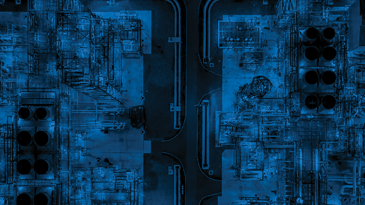More and more, the conversation about reducing unplanned downtime is focusing on the need for Reliability and Maintenance groups to work more closely with Production Operations. Why?
Current data suggests that over 80 percent of downtime can be traced back to operational events, or the way in which we operate the assets. This makes it seem obvious that increased collaboration between the Operations and Reliability teams is needed to make an impact. From an analytics perspective, the challenge is to bring maintenance and operations data together to find the operating behaviors that degrade asset integrity and reliability. But improving uptime is going to take more than consolidating and analyzing data. Technology alone cannot drive change.
Success is only achieved when capability and culture come together. We know from decades of experience in operational excellence that culture is king when it comes to transforming organizations.
Consider lean manufacturing, which has generated billions of dollars in benefits for production operations. It’s not a set of technologies but a philosophy that drives culture, with technology as part of the overall infrastructure. By adopting lean techniques, Reliability and Maintenance has a tremendous opportunity to transform from reactive cost center to proactive partner in driving increased asset effectiveness.
Lean Manufacturing and the Maintenance Function
Lean manufacturing has given rise to management models (like lean daily management) that have transformed culture and optimized operations in unparalleled ways. Industry-leading companies have gone as far as they can with traditional preventative maintenance methods. Lean’s collaboration mentality is what’s needed for true asset reliability.
For example, one multinational mining company uses machine learning technology to receive early warnings of degradation in metals refining processes and equipment. That earlier warning has driven changes in the culture of the organization so that now Maintenance and Operations come together around the data and partner on fixes that avoid complete shutdown and revenue loss.
Lean Principles and Asset Performance Management
Lean breaks down silos and creates a culture of problem-solving. Its five guiding principles can be easily adapted for Maintenance and Operations’ joint challenge of failing assets disrupting production:
- Challenge – Organizations need to challenge the "if it's not broken, don't fix it" mentality and longstanding practices like scheduled maintenance to achieve true asset performance management. Teams need to challenge themselves every day and ask if they’re truly meeting their reliability goals.
- Go and See – In a lean framework, stakeholders jointly go to and assess processes to find the root of the problem. No one leaves until there’s an action plan for every production barrier. Asset reliability requires the same level of collaboration. Maintenance and Production need to both “go and see” to jointly come up with solutions that meet organization-wide objectives.
- Continuous Improvement (Kaizen) – Improving the way Maintenance and Operations work together doesn’t cost anything. Data can help identify areas of risk and need, but businesses need to develop a culture that rewards individuals for continuous improvement ideas. The cumulative impact of small improvements can be enormous.
- Respect – Everyone plays an important role in asset reliability. In the process industries, there is always the risk of a breakdown. Responding with respect and empathy, especially for the operator, and removing emotion from the equation by focusing on facts and data are critical to maintaining a collaborative and open culture.
- Teamwork – Each unit and individual brings unique strengths, whether in maintenance, reliability, supply chain or operations. Business leaders need to train teams and identify opportunities to work together and build pride in achievements that are the result of collaboration between departments.
The process industries have had great success implementing lean manufacturing principles, driving continuous improvement by bringing together capability and culture. Maintenance and Reliability has that same opportunity to enable a lean organizational response and culture. And while technology is not the objective, it is a great enabler.
To learn how asset performance management can increase productivity and improve profitability for your organization, watch this on-demand webinar with LNS Research.





Leave A Comment